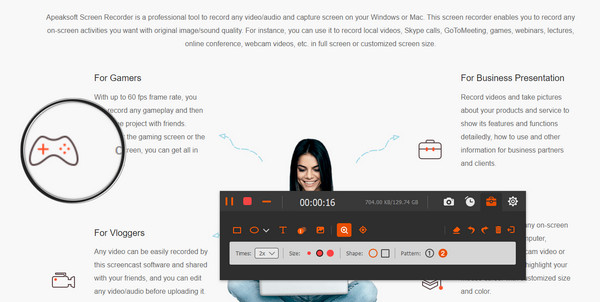

In comparison the same scenario in the video conferencing world might utilize H.323 to establish the call signaling, H.264 AVC as the video codec, G.722 as the audio codec, and then leverage H.239 to send the desktop screen of a computer in a conference room connected to a VGA cable.Each of each lines of communications are separately established connections between the same endpoints, with their own streams and bandwidth utilization. On one side a Skype for Business call will use Microsoft’s SIP platform to setup and negotiate a call or conference, leverage X-H264UC as the codec for the video streams, maybe opt for SILK as the audio codec, and then utilize RDP to share the desktop from one participant.The most significant difference between these two workflows are the lines of communications that are established, and how they are established, even though the resulting experiences are very similar. In the Microsoft world content sharing has leveraged Remote Desktop Protocol (RDP) since this ability was first provided in Office Communications Server 2005. While a standard H.323 or SIP call can support sending a second stream of video displaying this content the actual standard that makes this possible are not H264 itself.Ī call established using the H.323 call control platform will actually use the H.239 standard for establishing content sharing, where as a call that instead leverages a standard video SIP platform will use Binary Floor Control Protocol (BFCP) for establishing content. The transmitted pixels could be arranged to display a smiling face captured by a camera, or instead show the familiar view of a user’s PowerPoint application captured by a video output device of some sort. The H.264 standard is simply a video codec which could include anything in the actual image. For those with a foundational understanding in the traditional video conferencing world that statement can sound odd.

Unfortunately the problem with that simple statement is it can be interpreted differently depending on whom is reading it. Obviously companies looking to address interoperability scenarios with SfB and their standards-based video conferencing systems would sit up and take notice to these claims. Generically speaking it was communicated as some level of native support for “ H.264 content sharing” coming to the Skype for Business platform. Up until now there have been only a few places that this new feature has been discussed in the public realm, and most of that was before there was even a name for it. Make sure to also read the new article to understand the latest functionality provided by VBSS. While the concepts covered in this article are still applicable some of the limitations documented below are no longer valid.
#Skype share screen full screen games update
The Office 365 Roadmap currently lists this feature under the In Development section, but it is now available with the release of the Skype for Business 2016 client that is included in Office 2016.Ī newer article entitled Skype for Business VBSS Update has been posted which highlights even newer functionality in Skype for Business. With a more complete understanding of VBSS and its potential roadmap then the answers to various interoperability questions should be quite clear. This article will explain what this new functionality is, as well as what it is not. Most of the questions have been centered around the topic of video interoperability, thanks in part to some generalized statements.
:max_bytes(150000):strip_icc()/sharescreenbutton-ab06b76198964a738a06b65564362e8e.jpg)

There is currently very little information available about this new functionality, and as with anything not well understood it seems to be creating more confusion than warranted. Video Based Screen Sharing (VBSS) is a new Skype for Business client capability that has for the most part flown in under the radar.


 0 kommentar(er)
0 kommentar(er)
